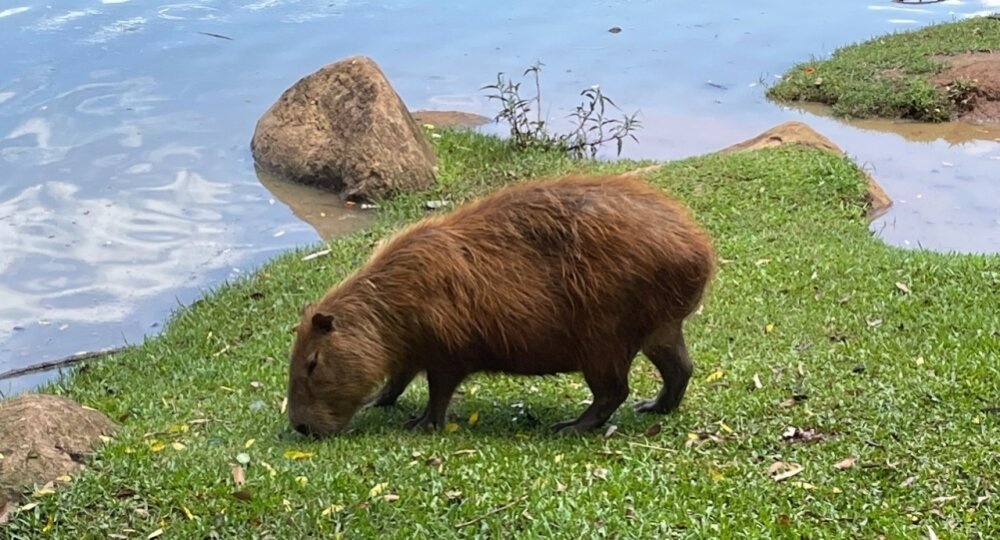Enzymes discovered in capybara gut could accelerate utilization of agroindustrial waste
Date: 29.4.2022
Converting agroindustrial waste into molecules of interest to society, such as biofuels and biochemicals, is one of the ways to mitigate dependence on oil and other fossil fuels. As one of the world's largest producers of plant biomass, Brazil is well-placed to lead this transition, but lignocellulosic raw materials (containing lignin, hemicellulose and cellulose) are hard to deconstruct, or (more technically put) recalcitrant to microbial and enzymatic degradation.
 In Campinas (Sao Paulo state), a research group at the Brazilian Biorenewables National Laboratory (LNBR), an arm of the Brazilian Center for Research in Energy and Materials (CNPEM), conducted an interdisciplinary study involving omics (genomics, proteomics, metabolomics, etc.) and synchrotron light, and discovered two novel families of enzymes with biotechnological potential produced by microorganisms in the gut of capybaras.
In Campinas (Sao Paulo state), a research group at the Brazilian Biorenewables National Laboratory (LNBR), an arm of the Brazilian Center for Research in Energy and Materials (CNPEM), conducted an interdisciplinary study involving omics (genomics, proteomics, metabolomics, etc.) and synchrotron light, and discovered two novel families of enzymes with biotechnological potential produced by microorganisms in the gut of capybaras.
Both enzyme families act on components of plant cell walls and can therefore be used to produce biofuels, biochemicals and biomaterials. One of them also has potential applications in the dairy industry because it promotes lactose degradation.
"One of our research lines explores Brazilian diversity in pursuit of novel microbial mechanisms that reduce the recalcitrance of lignocellulosic waste. We noted that the capybara is a highly adapted herbivore capable of obtaining energy from recalcitrant plant waste and that it hasn't been studied very much," said Mário Tyago Murakami, LNBR's Scientific Director.























